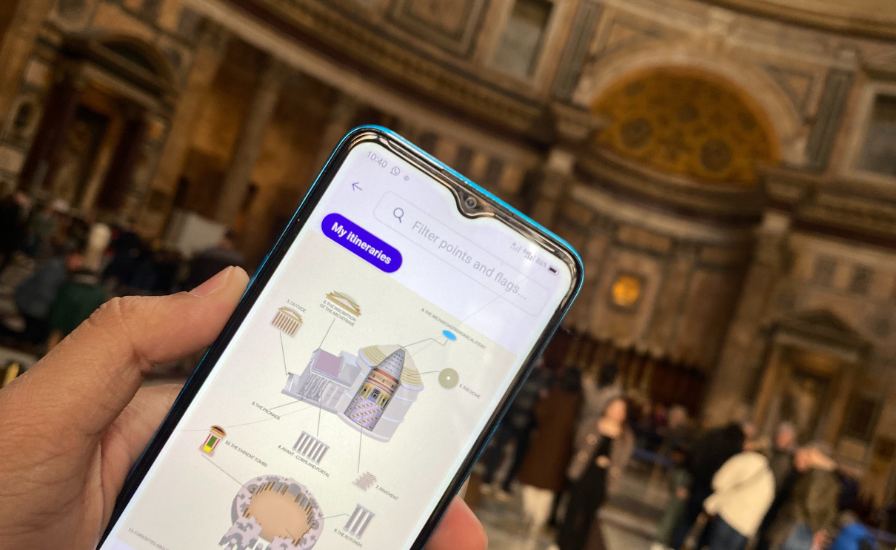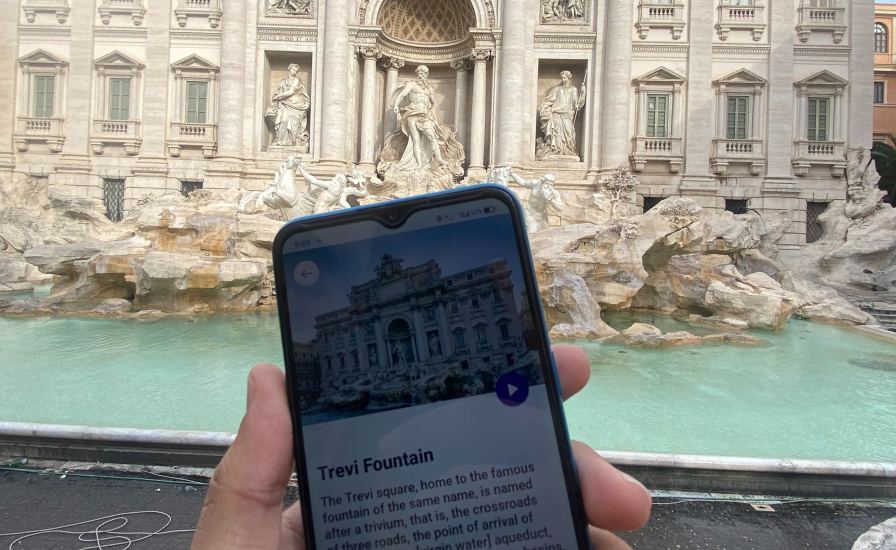Entry Is Free, But Consider Your Options
One of the great aspects of visiting the Pantheon is that entry is free of charge. However, during peak tourist seasons, you might encounter long lines, which can significantly extend your waiting time. To make your visit more efficient, consider a skip-the-line entry ticket to the Pantheon. This ticket allows you to bypass the regular queue, saving you time and hassle, especially if you’re on a tight schedule.
Enhance Your Visit with a Pantheon Tour
To truly appreciate the historical and architectural aspects of the Pantheon, taking a Pantheon tour can be invaluable. These tours are often led by knowledgeable guides who provide insights into the building’s history, architecture, and the role it has played throughout the centuries. Whether you're a history buff or a casual tourist, a guided tour can enrich your understanding and appreciation of this ancient structure.
The Benefits of a Pantheon Audio Guide

For those who prefer exploring at their own pace, a Pantheon audio guide is an excellent option. Available in multiple languages, the audio guide offers detailed commentary on the Pantheon’s architecture, history, and artworks, including the famous Renaissance painter Raphael’s tomb. You can delve deeper into the stories behind the Pantheon's exquisite features, enhancing your overall experience while visiting the Pantheon.
Best Times to Visit the Pantheon
Timing can be everything when visiting popular landmarks like the Pantheon. To avoid the crowds and enjoy a more peaceful visit, try to arrive early in the morning or later in the afternoon. The light coming through the oculus creates beautiful effects inside the Pantheon at different times of the day, with midday being particularly dramatic when sunlight directly aligns with the oculus.
Photography and Restrictions
Photography inside the Pantheon is allowed, but flash photography is prohibited to preserve the integrity of the site and its artworks. Additionally, visitors should maintain a respectful silence inside as it is still an active place of worship. Remember, large backpacks and luggage are not permitted inside, and there are no storage facilities on-site, so plan accordingly.
Events and Occasions
The Pantheon is not only a tourist attraction but also a venue for occasional cultural events and religious ceremonies, including masses on important Catholic days. If you are visiting the Pantheon during these times, you may have the unique opportunity to witness a live event, adding a special element to your experience.
Accessibility
The Pantheon is accessible to wheelchair users and those with limited mobility. There are designated entrances, and the staff is generally helpful, ensuring that everyone has a chance to enjoy this historical masterpiece.
Nearby Attractions

While visiting the Pantheon, consider exploring nearby attractions. The Piazza della Rotonda, where the Pantheon is located, is filled with charming cafes and shops. Other nearby landmarks include the beautiful Piazza Navona, the Trevi Fountain, and the bustling Campo de’ Fiori market—all within walking distance and worth a visit. Continue Reading if you want to know more about Trevi Fountain and why it is so famous?
Dive Deeper into the Pantheon's Architectural Brilliance
The architectural design of the Pantheon is not only groundbreaking for its time but also a study in beauty and balance, a perfect fusion of form and function. The dimensions of the interior form a perfect sphere, symbolizing the vault of the heavens, with the diameter of the dome exactly equal to its height from the floor. This spherical design is echoed in the oculus, the central opening, which serves as a connection between the temple and the gods above. Understanding this architectural symbiosis can significantly enhance your appreciation while visiting the Pantheon.
Explore the Art and Inscriptions
While the structure itself is a masterpiece, the interior decorations and inscriptions within the Pantheon also merit attention.
The walls are lined with niches, each housing statues of various deities and historical figures, reflecting its origin as a temple dedicated to all Roman gods. Notably, the inscription on the façade of the Pantheon, "M·AGRIPPA·L·F·COS·TERTIUM·FECIT," attributes the original construction to Marcus Agrippa, providing a direct link to Rome’s imperial past. Exploring these elements gives a deeper insight into the Roman world and its cultural dynamics.
Attending a Mass at the Pantheon
For those interested in experiencing the Pantheon as a living religious site, attending a mass can be a profoundly moving experience. The Pantheon still functions as a church, known as the Basilica of St. Mary and the Martyrs. Masses are held here on Sundays and holy days, providing visitors with a chance to engage in worship in one of the most historic settings in the world. Participating in service here allows for a unique combination of spiritual and historical introspection.
The Influence of the Pantheon on Modern Architecture
The Pantheon’s influence on modern architecture cannot be overstated. Its dome, in particular, inspired countless other buildings throughout history, from the Florence Cathedral dome engineered by Brunelleschi to the United States Capitol in Washington, D.C. For architecture enthusiasts, recognizing these connections can add layer of interest to the visit, linking the Pantheon’s ancient dome with its numerous modern-day 'descendants.'
Practical Tips for Visiting
To make your visit as enjoyable as possible, here are a few practical tips:
Footwear: Choose comfortable shoes as the marble floors can be uneven and slippery.
Weather Considerations: The Pantheon can be particularly cold and damp in the winter months, so dress accordingly.
Timing Your Photos: For the best photographic lighting, aim to visit when the sun is directly overhead, illuminating the interior through the oculus in a spectacular display.
Engage with Local Guides
While audio guides and self-led tours can provide a wealth of information, engaging with local guides offers a personal touch that can greatly enhance your experience. Many guides bring their own unique perspectives and stories about the Pantheon, often sharing anecdotes or hidden secrets of the building that you won't find in written guides. This personal interaction can make your visit more memorable and engaging.
Souvenirs and Local Crafts
Consider visiting the small shops surrounding the Pantheon for unique souvenirs and local crafts. These shops often sell items that reflect the artistic heritage of Rome, from handmade jewelry and crafts to books and art reproductions that capture the essence of Roman history and culture. Supporting local artisans also helps preserve the traditional crafts that are so much a part of the city's charm.
Reflect on Your Visit
After visiting the Pantheon, take some time to reflect on your experience. This ancient temple, once dedicated to all the gods of pagan Rome, and now a Christian church, stands as a symbol of the cultural and religious evolution of European society. Its enduring beauty not only tells the story of Rome but also of humanity's quest for beauty and spiritual connection through architecture.
By taking the time to explore these aspects, your visit to the Pantheon becomes more than just a tour; it becomes a journey through history, art, and spirituality. Whether you're a first-time visitor or returning to rediscover its wonders, the Pantheon continues to offer new insights and inspiration with each visit.
Concluding Your Visit
Ending your visit to the Pantheon, take a moment to step back and view it from the outside in the context of the Piazza della Rotonda. The contrast between the bustling square and the ancient temple’s grand, serene facade provides a perfect reflection moment of Rome’s layered history. Here are some more tips on how to visit Pantheon in Rome.
In summary, visiting the Pantheon is a highlight of any trip to Rome, and knowing these tips and options for entry tickets and tours will ensure a seamless and enriching experience. Whether you choose a skip-the-line entry ticket, an audio guide, or simply to soak in the ambiance on your own, the Pantheon is sure to leave a lasting impression.












